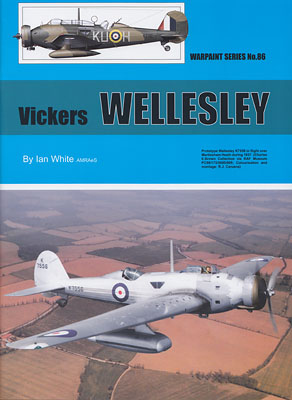
Vickers Wellesley
By Chris Banyai-Riepl
Warpaint Series No. 86
Author: Ian White
Publisher: Warpaint Books
Binding: Softcover
Pages: 40
The Vickers Wellesley marked the beginning of an alliterative quartet of geodetic aircraft that included the Wellington, Warwick, and Windsor. The geodetic concept used by Vickers in all of these aircraft evolved from Barnes Wallis' work in that construction method. This newest book in the Warpaint Series examines this interesting first step into geodetic aircraft construction with a detailed history of the Vickers Wellesley.
The operational story of the Wellesley is a fairly short one, as it was only in service for a short while. Its unique construction, though, requires an extensive bit of background information, and this book begins with just that. In fact, production examples of the Wellesley do not enter into discussion for several pages of text, as the author goes into detail about the design and testing of geodetic construction. This background is important to understanding the Wellesley, and it makes for an interesting read.
The operational record of the Wellesley follows the technical description, and this section details the short squadron service of the type. With the first Wellesley aircraft arriving in squadron service in early 1937 and the first examples replaced in the spring of 1938, the Wellesley definitely had a limited career. The entire span of the Wellesley with Bomber Command lasted only two years, but the type did soldier on in Middle East and African squadrons, where the Wellesley went into combat against the Italians in East Africa. The last Wellesley operations were anti-submarine missions from Egypt in 1943.
Like other titles in the Warpaint Series, this book combines the well-written text with plenty of great photographs. There are quite a few photos showing the Wellesley under construction, which highlights the geodetic design. Scale drawings are also included, and there are quite a few color profile illustrations as well. For the latter, there was not much variation in camouflage for the Wellesley, but there are some interesting marking variations depicted.
While overshadowed by the bigger Wellington, the Vickers Wellesley was an important aircraft that proved the validity of geodetic construction. The aircraft is done justice in this book, and it makes for a great addition to the Warpaint series. My thanks to Warpaint Books for the review copy.
